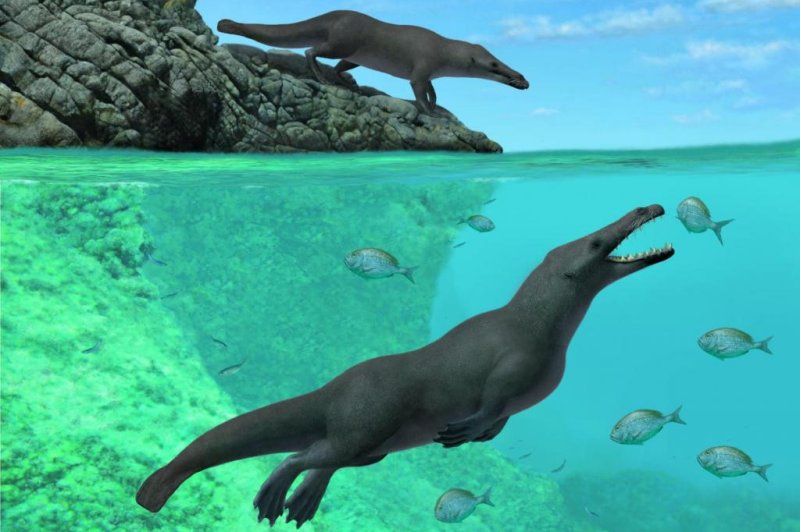An artistic rendering showcases the amphibious nature of the newly discovered four-legged whale species. Photo by A. Gennari
April 5 (UPI) -- The discovery of the remains of an ancient, four-legged whale along the coast of Peru suggests the earliest cetaceans arrived in the Americas at least 42 million years ago.
Cetaceans, the group of marine mammals including whales and dolphins, evolved from small, four-legged, hoofed land animals. The earliest cetaceans emerged in south Asia. On the evolutionary timeline, cetaceans split from even-toed ungulates around 50 million years ago.
Just a few million years later, primitive whales -- with four legs -- had made their way to the Pacific.
"This is the first indisputable record of a quadrupedal whale skeleton for the whole Pacific Ocean, probably the oldest for the Americas, and the most complete outside India and Pakistan," Olivier Lambert, researcher at the Royal Belgian Institute of Natural Sciences, said in a news release.
The unusual whale species was found among fossil-rich sediments at Playa Media Luna, an expansive dig site situated in coastal desert of southern Peru. Researchers named the new four-legged cetacean species Peregocetus pacificus.
"When digging around the outcropping bones, we quickly realized that this was the skeleton of a quadrupedal whale, with both forelimbs and hind limbs," Lambert said.
Close analysis of the well-preserved fossil proved the primitive cetacean species was capable of maneuvering both in the water and on dry land. The four-legged whale could grow up to 13 feet in length, and it used otter-like features and a beaver-like tail to swim.
The fossil discovery -- published this week in the journal Current Biology -- suggests the earliest whales made their way to the Americas from Africa by crossing the South Atlantic, aided on their journey by westward surface currents.
Scientists expect the discovery of additional fossils to provide new insights into the dispersal patterns of early cetaceans.
"We will keep searching in localities with layers as ancient, and even more ancient, than the ones of Playa Media Luna, so older amphibious cetaceans may be discovered in the future," Lambert said.















